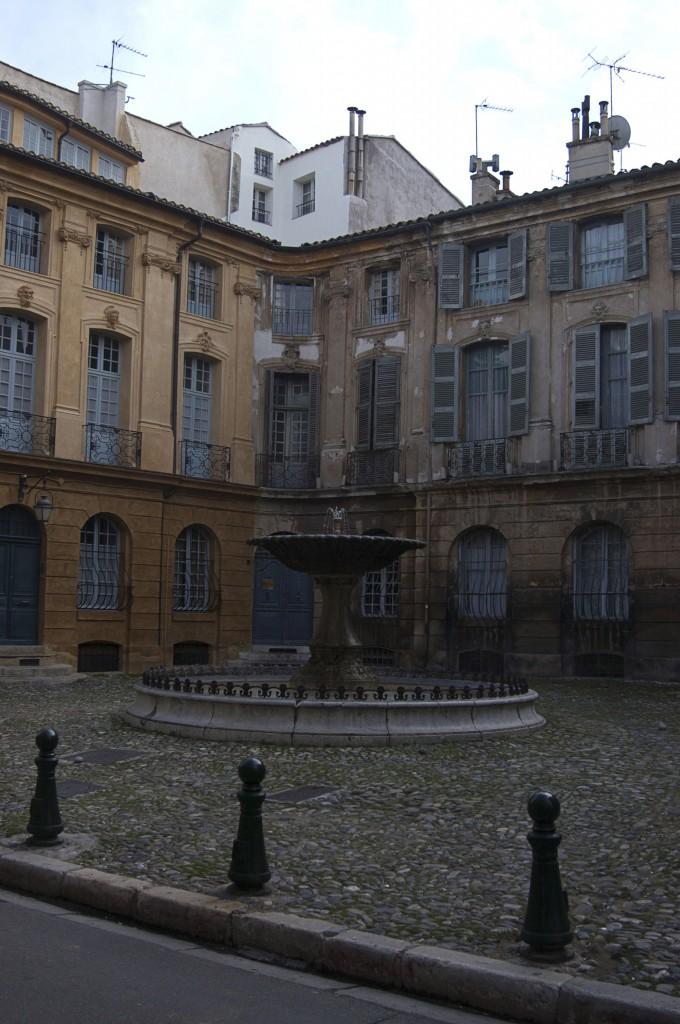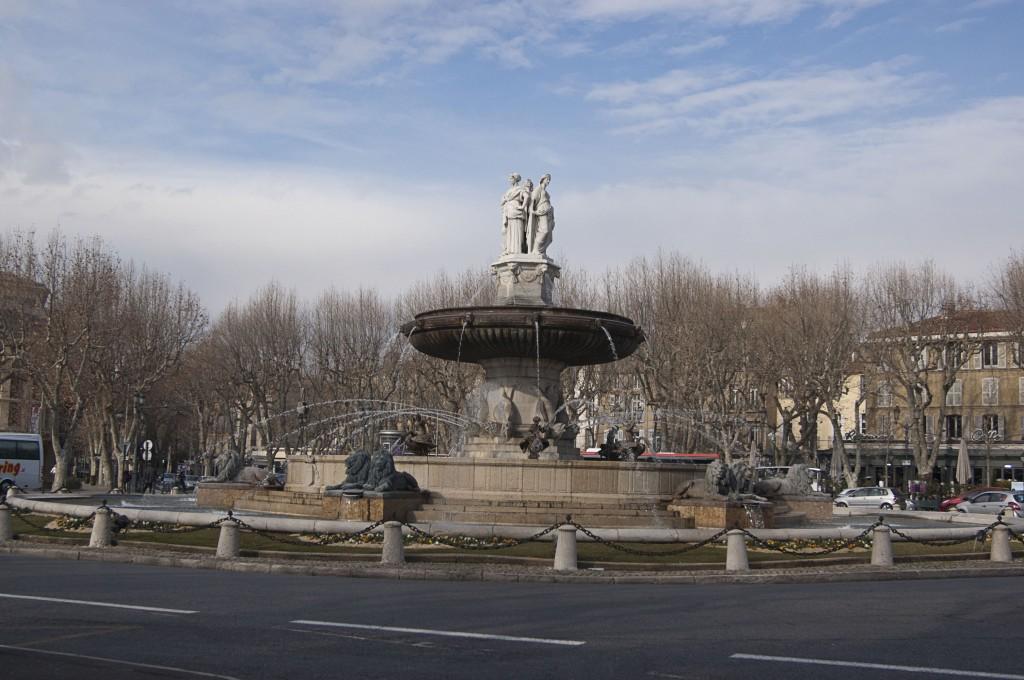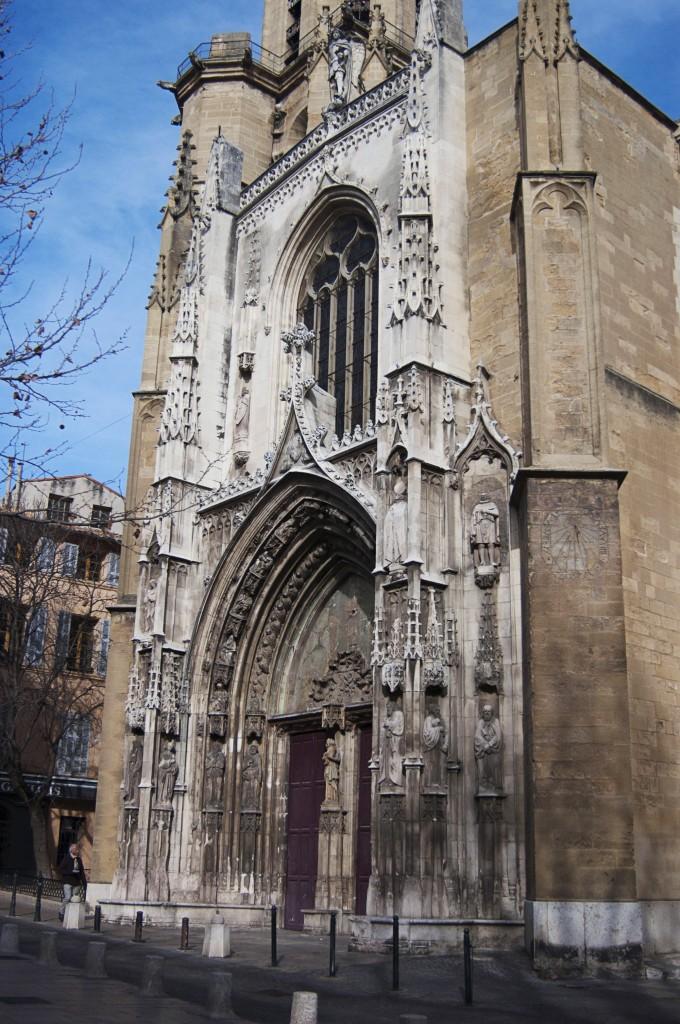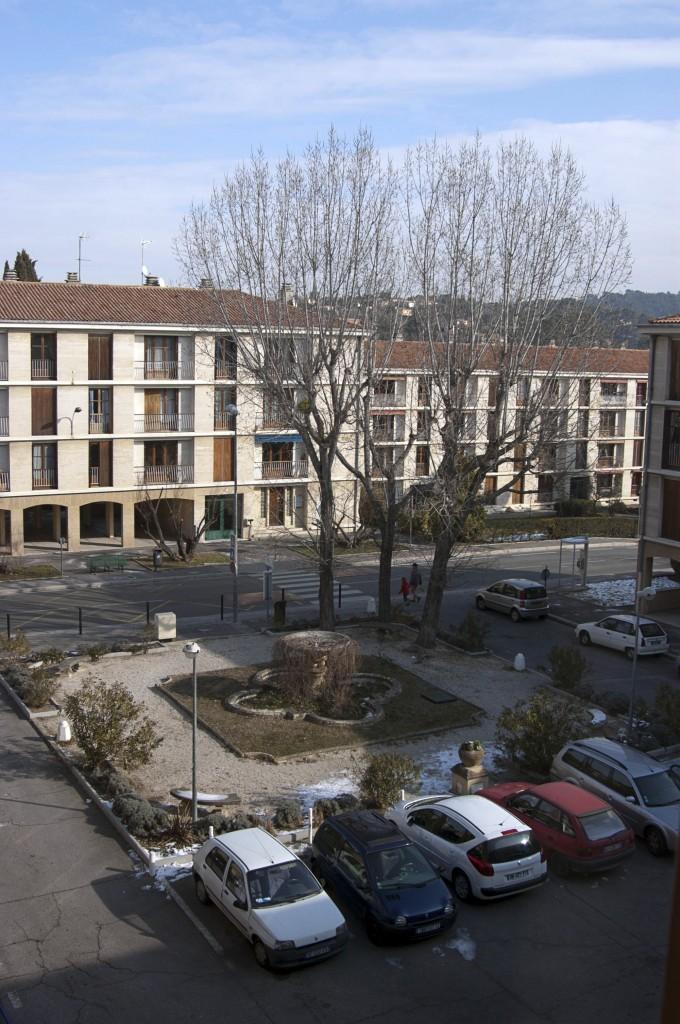Hello! Ciao! Hola! Bonjour!
My semester abroad has been a multicultural experience from the outset. The flight from John F. Kennedy International Airport to Madrid-Barajas Airport and finally to Marseille Provence Airport was a collage of English, Italian, Spanish, and French.
I am studying abroad in Aix-en-Provence, France, an ancient Roman city that was founded in 123 B.C. Aix was the medieval capital of Provence and was originally founded by the Roman consul Gaius Sextius Calvinus as a military colony. Aix was originally named Aquae Sextiae, Latin for “the waters of Sextius”, after its founder.
The first thing I noticed about Aix was its pervasive cohesion. Each part of the city fits seamlessly into the complete Provençal puzzle.
One of the main unifying aspects of this city is its architecture. Nearly all of its buildings are built of yellow or pink sandstone that was quarried in the region.
The “Aquae” part of the city’s original name comes from its many springs. The theme of water in Aix is furthered by its numerous fountains.
 Graham Hebel/The IthacanThe Fontaine d’Albertas, located in the Place d’Albertas, was built in 1912 in the Parisian style of the time.
Graham Hebel/The IthacanThe Fontaine d’Albertas, located in the Place d’Albertas, was built in 1912 in the Parisian style of the time.
 Graham Hebel/The IthacanThe Fontaine de la Rotonde, built in 1860, is a famous landmark that is situated in the heart of Aix-en-Provence. It is the most famous of the city’s forty fountains.
Graham Hebel/The IthacanThe Fontaine de la Rotonde, built in 1860, is a famous landmark that is situated in the heart of Aix-en-Provence. It is the most famous of the city’s forty fountains.
 Graham Hebel/The IthacanAll the streets in the city center look like the one shown here. They are mostly cobblestoned and very narrow, although cars and motorcycles still manage to navigate them.
Graham Hebel/The IthacanAll the streets in the city center look like the one shown here. They are mostly cobblestoned and very narrow, although cars and motorcycles still manage to navigate them.
 Graham Hebel/The IthacanThe Cathédrale Saint-Sauveur d’Aix is the seat of the Archbishop of Aix and was built on the site of the Roman forum of Aix. The cathedral was built continually between the 12th and 19th centuries.
Graham Hebel/The IthacanThe Cathédrale Saint-Sauveur d’Aix is the seat of the Archbishop of Aix and was built on the site of the Roman forum of Aix. The cathedral was built continually between the 12th and 19th centuries.
 Graham Hebel/The IthacanThis is a photo of the apartment complex that I live in with my host family (taken from my window). It is built from the same type of stone that unifies the rest of the city.
Graham Hebel/The IthacanThis is a photo of the apartment complex that I live in with my host family (taken from my window). It is built from the same type of stone that unifies the rest of the city.